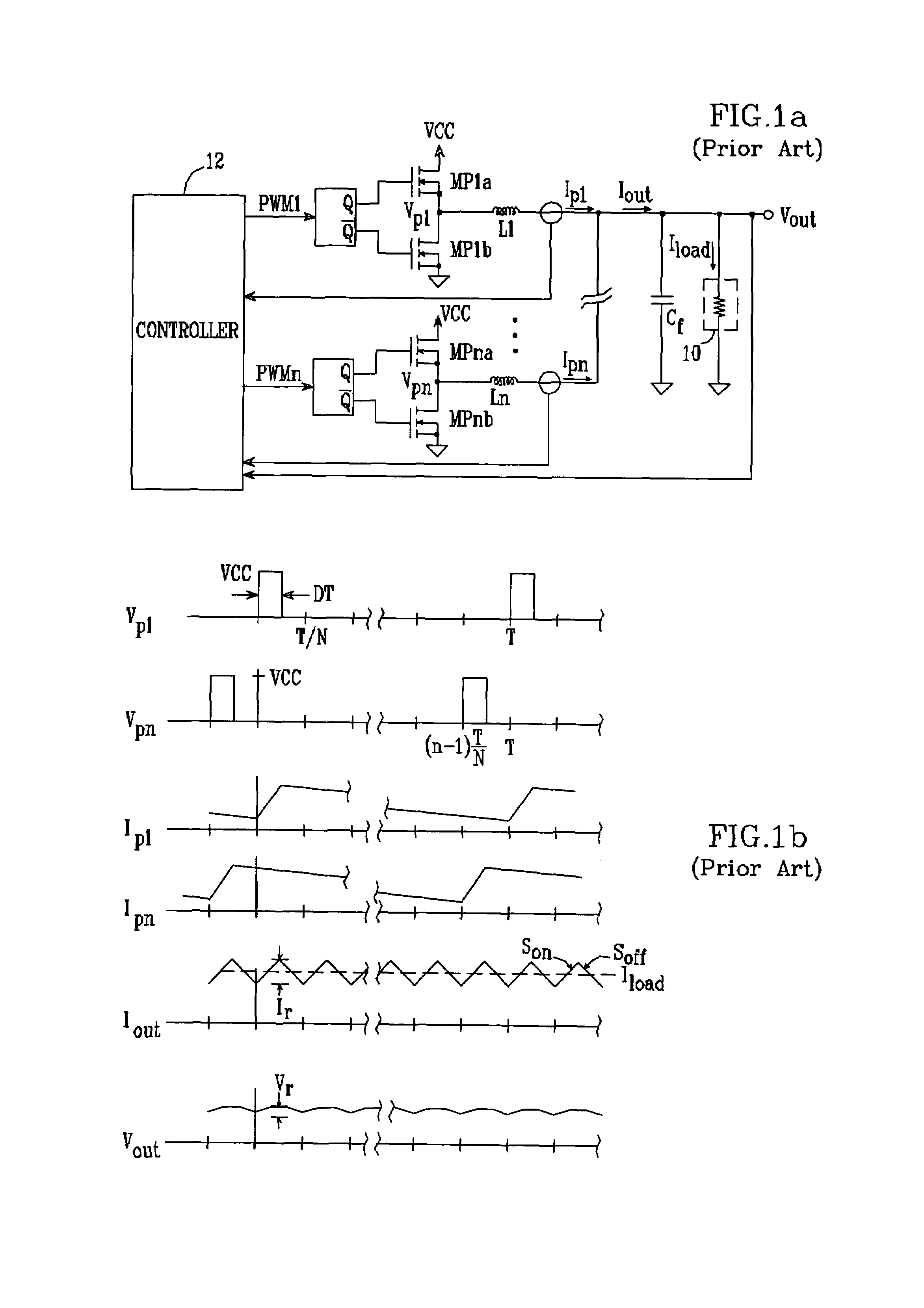Multiple-phase DC-DC converter topology
a converter and multi-phase technology, applied in the direction of electric variable regulation, process and machine control, instruments, etc., can solve the problems of low switching frequency, slow response, and high speed processors to power supplies, and achieve the effect of improving the converter's response to changes
- Summary
- Abstract
- Description
- Claims
- Application Information
AI Technical Summary
Benefits of technology
Problems solved by technology
Method used
Image
Examples
Embodiment Construction
[0030]A schematic / block diagram illustrating the principles of a multiple-phase DC—DC converter in accordance with the present invention is shown in FIG. 2. The number of main phases is identified herein as “N”. For each phase, the regulator includes a switching circuit (20, 22) made up of one or more switching transistors (MP1a / MP1b, . . . , MPna / MPnb), with each switching circuit connected to one side of a respective output inductor (L1, . . . , Ln). The opposite, “output” sides of the inductors are connected together at a common output terminal 24. The N switching circuits are operated by a control circuit 26, which provides respective control signals 27, 28 to the switching circuits so as to generate respective phase currents Ip1, . . . , Ipn. The N phase currents are summed together at terminal 24 and thereby provide an output voltage Vout and a total output current Iout, suitable for driving a load 29. The converter normally includes a filter capacitor Cout to reduce the rippl...
PUM
 Login to View More
Login to View More Abstract
Description
Claims
Application Information
 Login to View More
Login to View More - R&D
- Intellectual Property
- Life Sciences
- Materials
- Tech Scout
- Unparalleled Data Quality
- Higher Quality Content
- 60% Fewer Hallucinations
Browse by: Latest US Patents, China's latest patents, Technical Efficacy Thesaurus, Application Domain, Technology Topic, Popular Technical Reports.
© 2025 PatSnap. All rights reserved.Legal|Privacy policy|Modern Slavery Act Transparency Statement|Sitemap|About US| Contact US: help@patsnap.com



